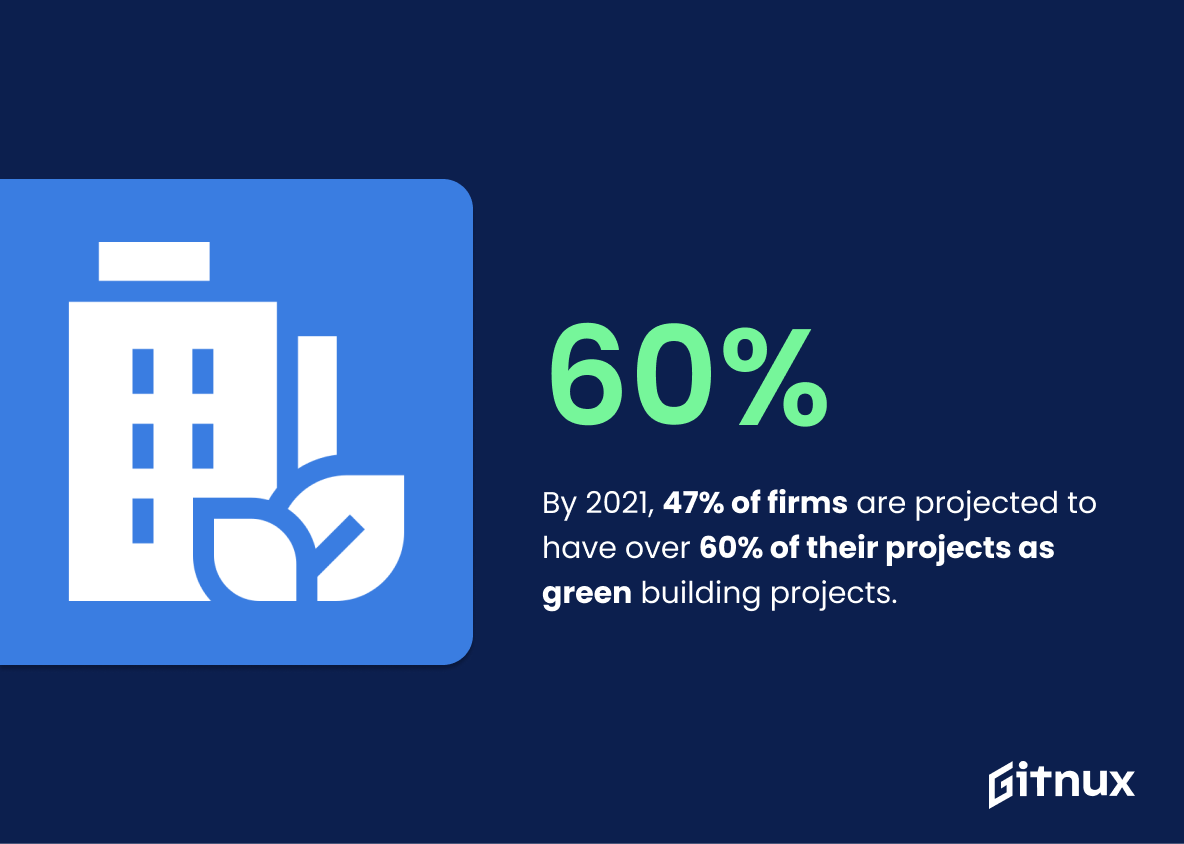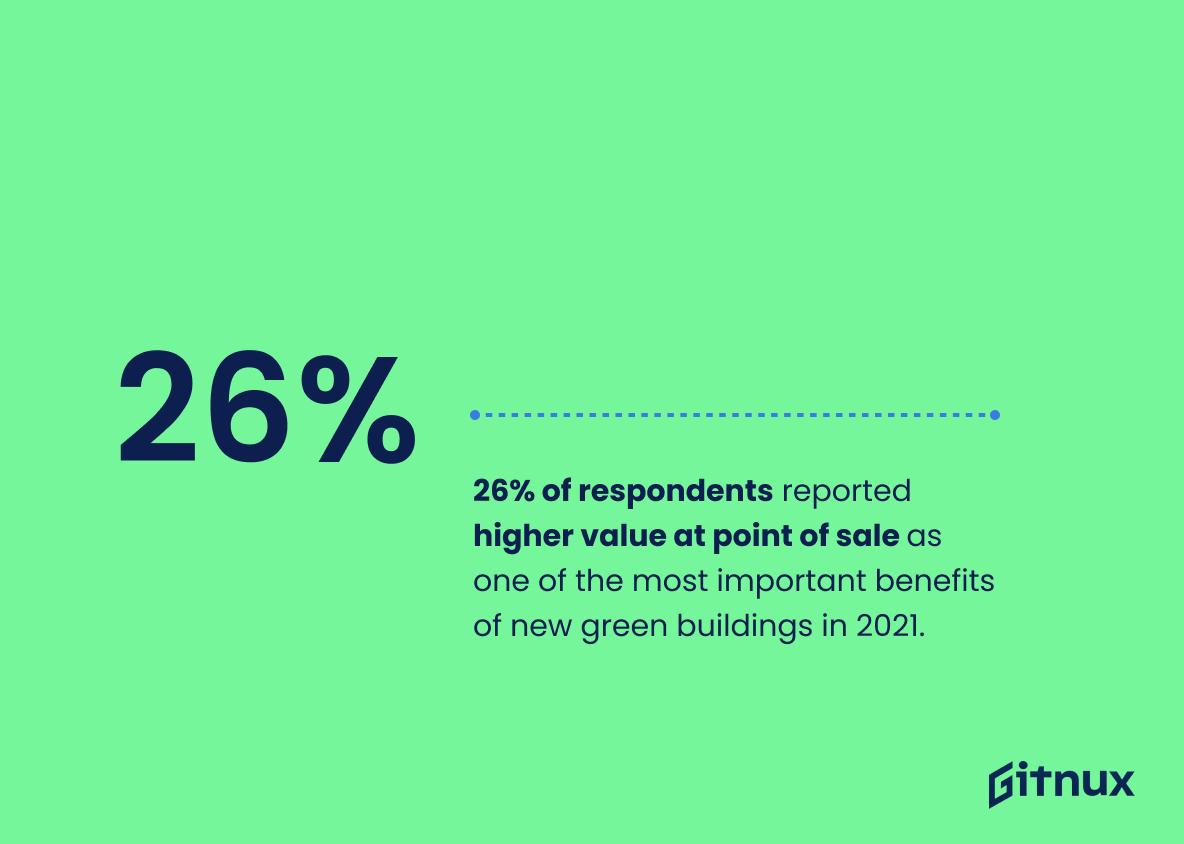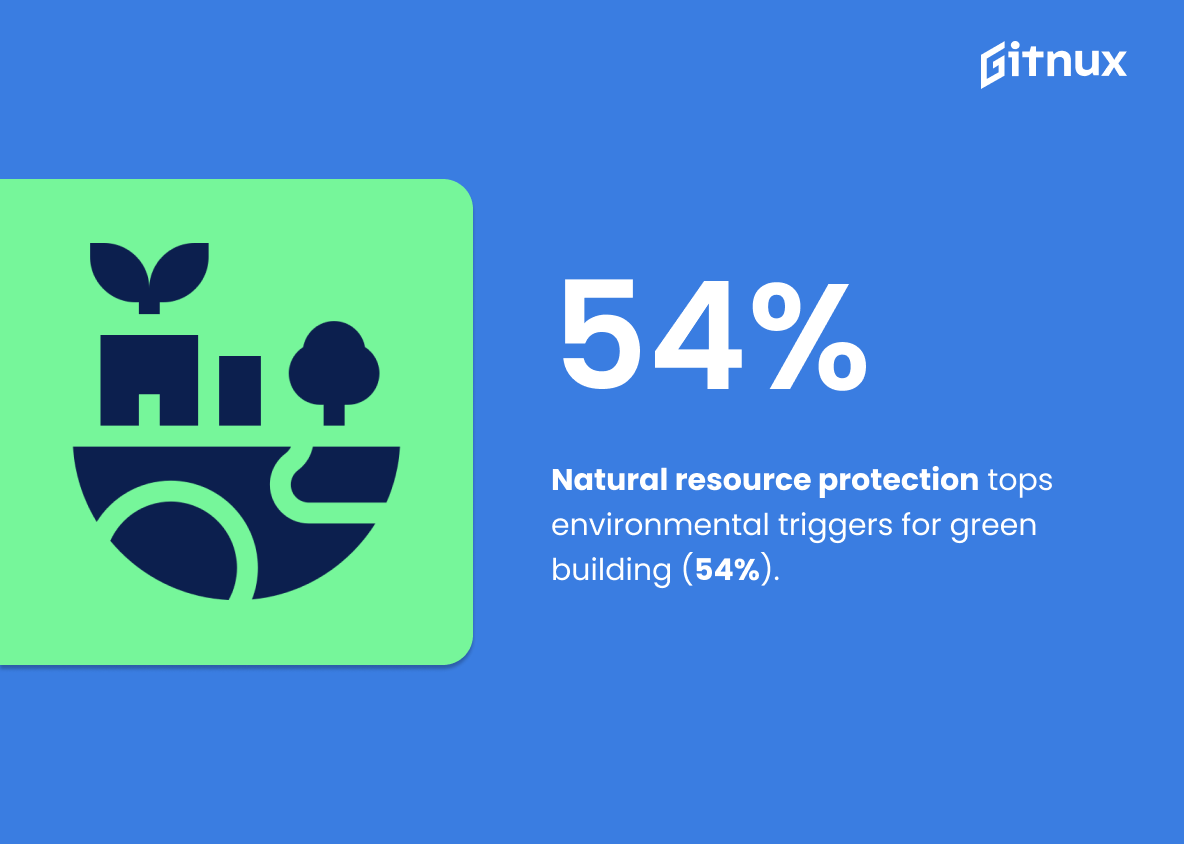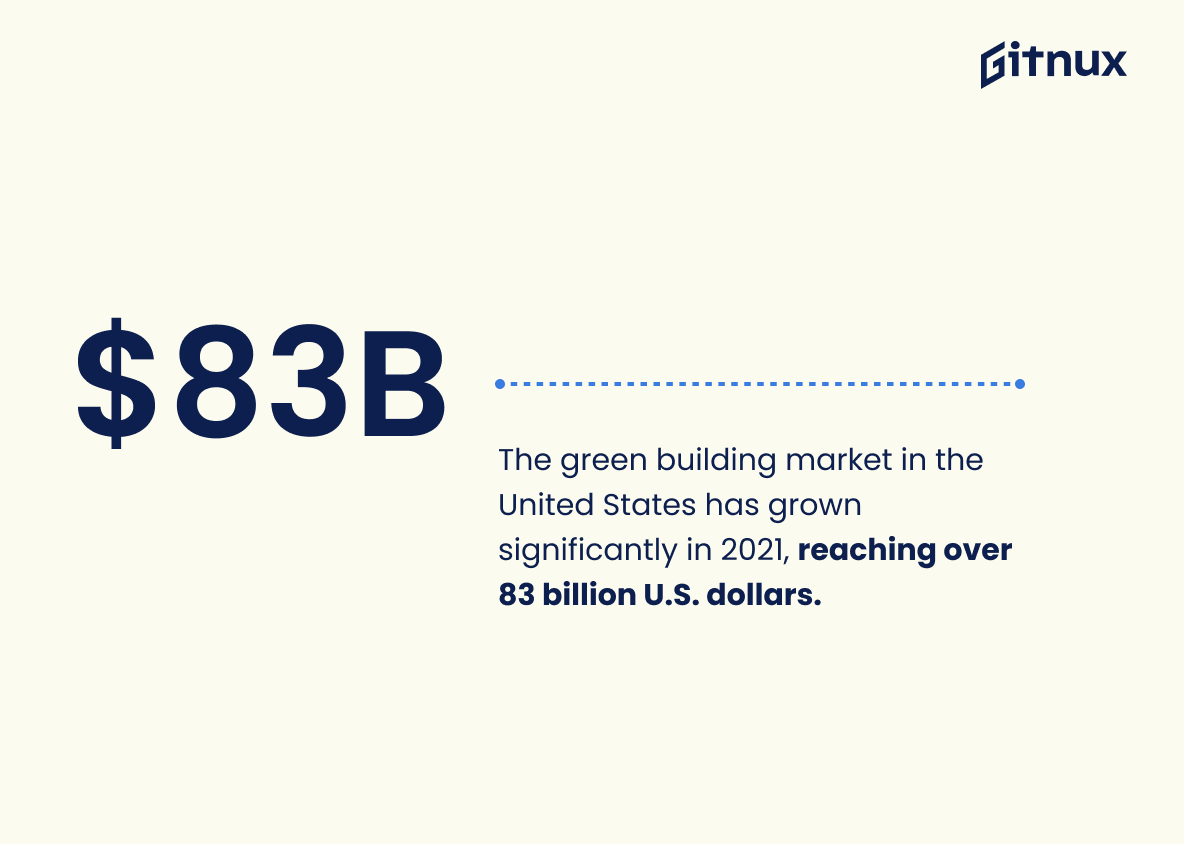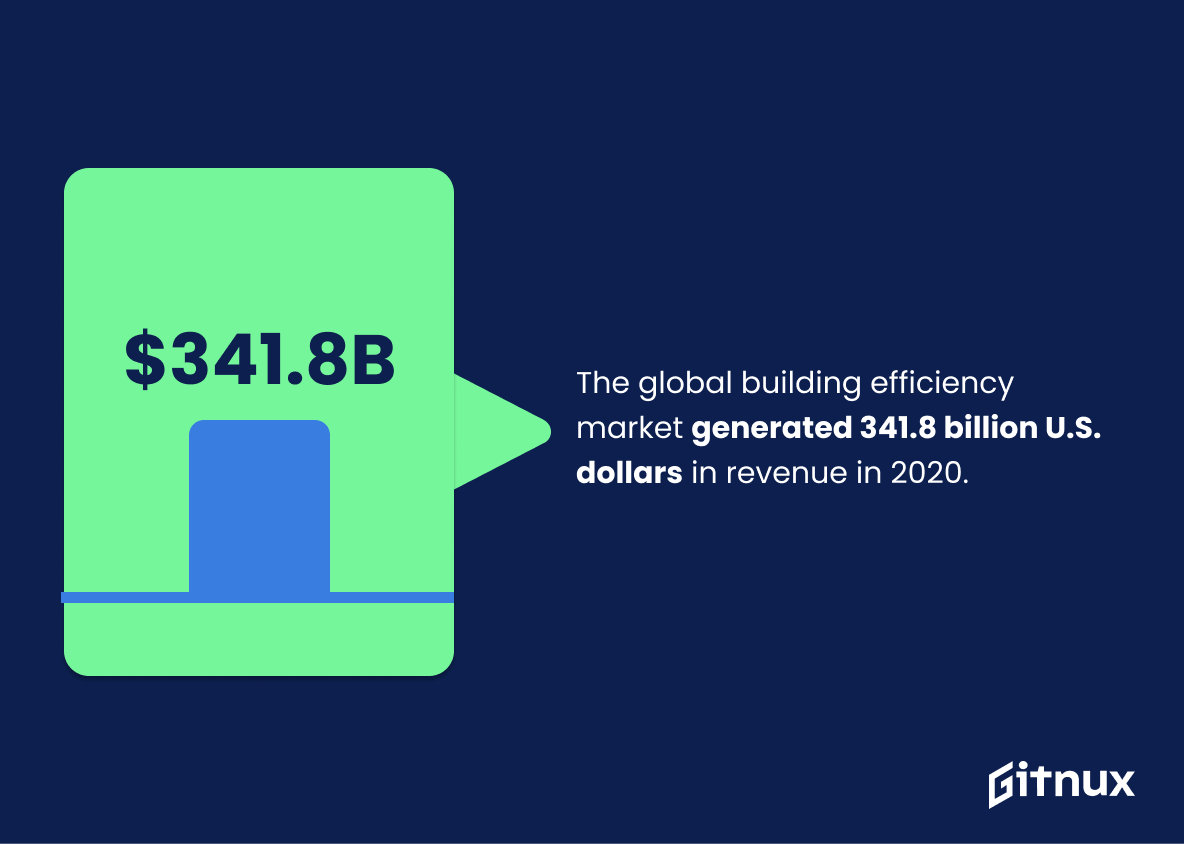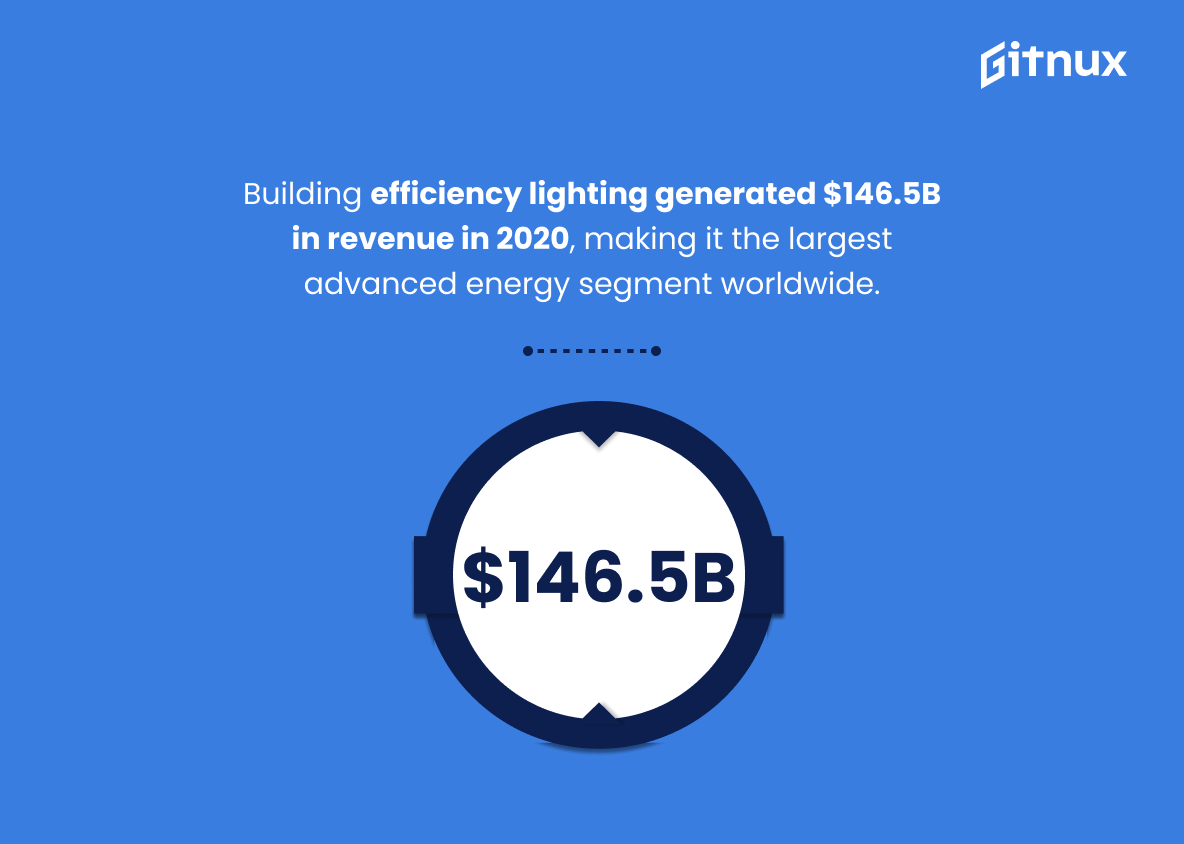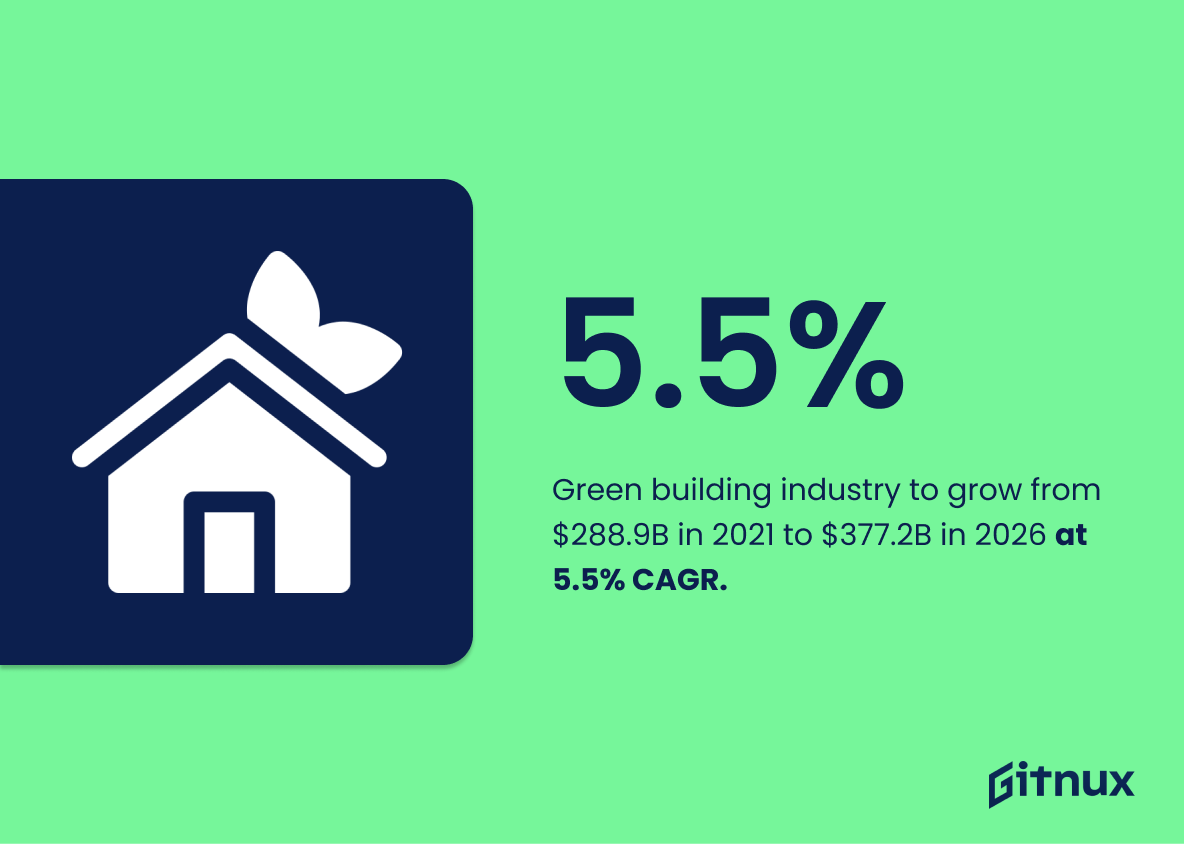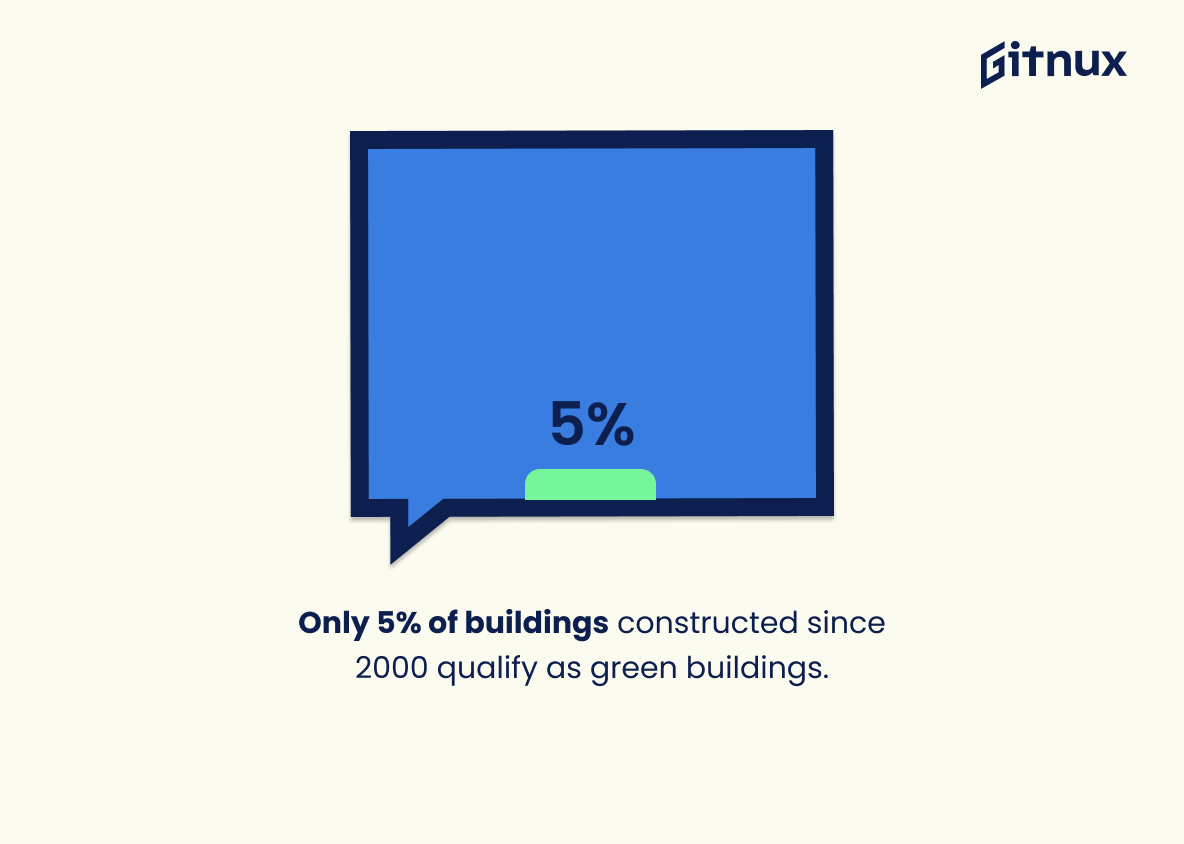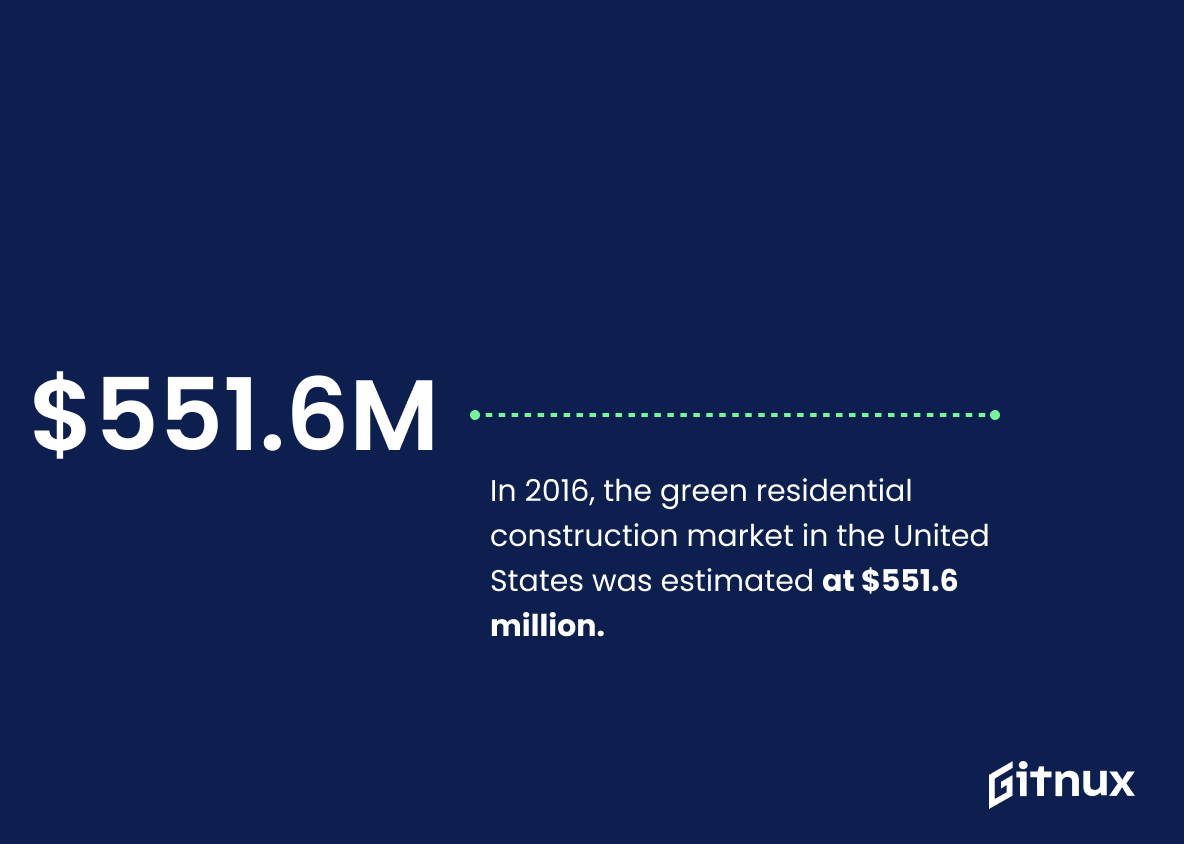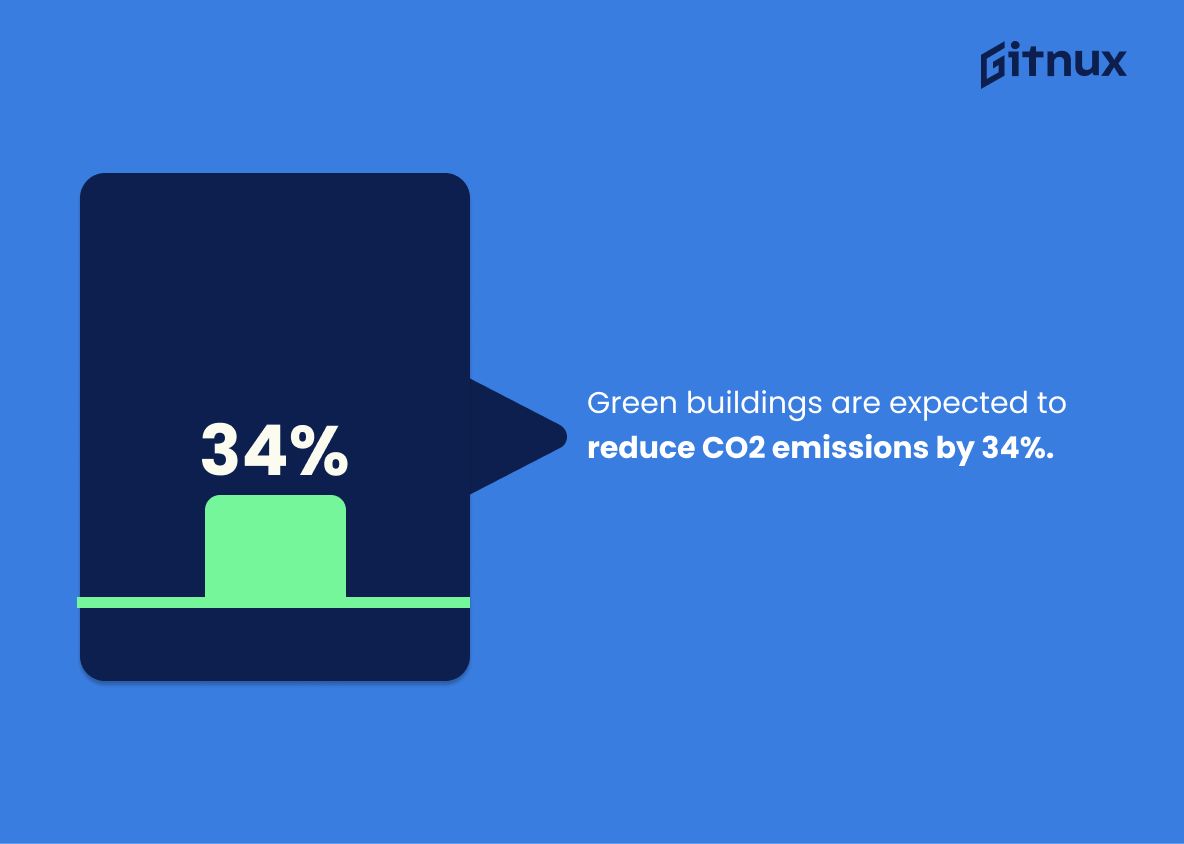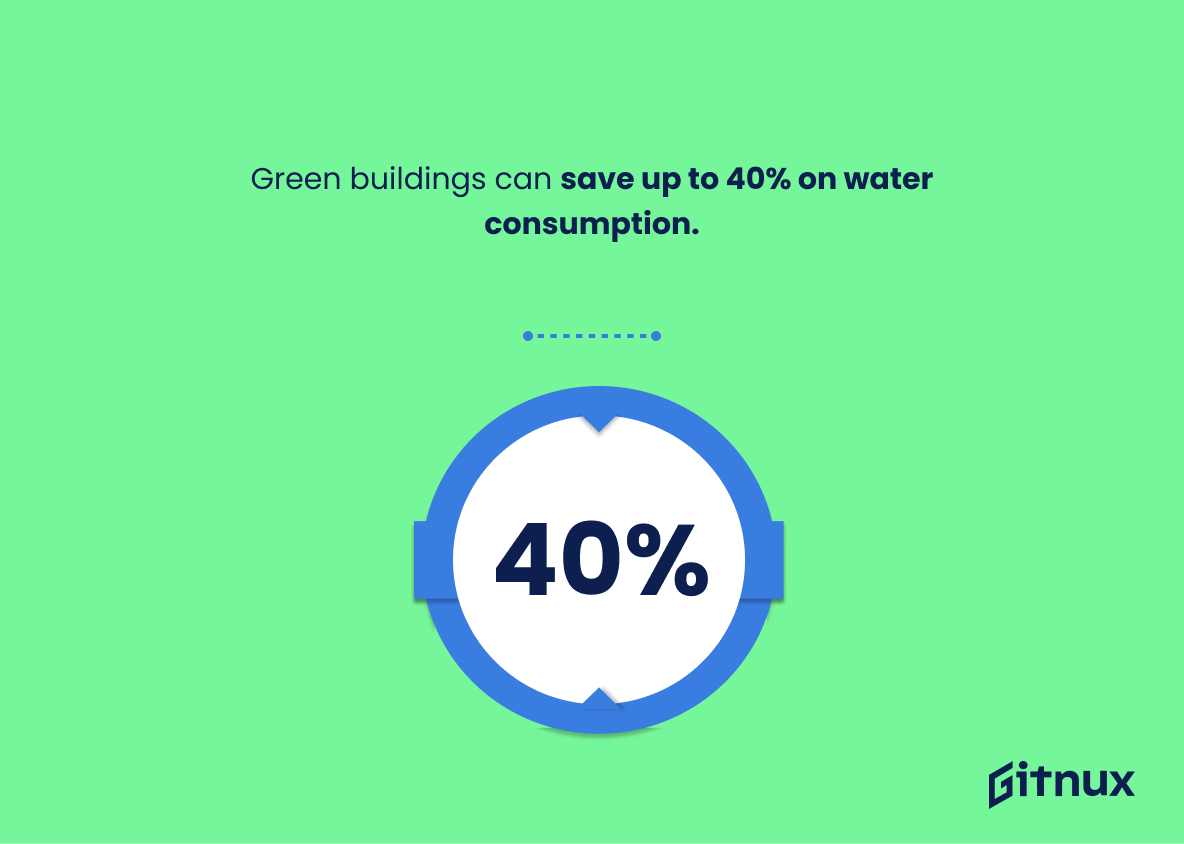The green building industry is growing rapidly, with more and more people looking for ways to reduce their environmental impact. As the industry continues to expand, it’s important to stay up to date on the latest green building industry statistics.
In this article, we’ll take a look at some of the most interesting green building industry statistics, including the number of green buildings, the amount of energy saved, and the economic benefits of green building. We’ll also explore the future of the green building industry and how it can continue to make a positive impact on the environment.
Green Building Industry: Most Important Statistics
57% of respondents listed ‘creating a sense of community’ as one of the main social reasons for driving green building activity worldwide.
The green building market in the United States has grown significantly in 2021, reaching over 83 billion U.S. dollars.
Green Building Industry: Statistics Overview
By 2021, 47% of firms are projected to have over 60% of their projects as green building projects.
This shows the growth of green building projects over the next few years. This is important for the industry as it shows the increasing demand for green building projects and the potential for growth in the industry.
Additionally, it shows the potential for firms to benefit from the increased demand for green building projects.
37% of companies plan to build green in existing building and retrofit sector.
There is a high level of interest in green building activity, which is important for the growth of the green building industry. This statistic also provides insight into which sectors are most likely to be involved in green building activity, which can help inform future investments and strategies.
26% of respondents reported higher value at point of sale as one of the most important benefits of new green buildings in 2021.
Green building investments are becoming increasingly attractive to buyers, as they are now seeing higher value at the point of sale. This indicates that green building investments are becoming more financially viable and attractive to buyers, which could lead to increased investment in the green building industry in the future.
68% of U.S. adults believe green buildings have an impact on cleaner air.
The majority of U.S. adults are aware of the potential benefits of green buildings and are supportive of their implementation. This indicates that there is a strong public demand for green buildings, which can help to drive investment and innovation in the green building industry.
57% of respondents listed ‘creating a sense of community’ as one of the main social reasons for driving green building activity worldwide.
Creating a sense of community is a key motivator for people to engage in green building activity. This suggests that green building initiatives should focus on creating a sense of community in order to be successful.
54% of respondents listed the protection of natural resources as a top environmental trigger for green building activity.
The industry is focused on sustainability and environmental protection.
China had the largest green building market in the world in 2021, amounting to over 178 billion U.S. dollars, while the U.S. was worth approximately 83 billion U.S. dollars.
This shows the potential of the industry and the potential of the market in China compared to other countries. It also highlights the importance of investing in green building technology and infrastructure in order to increase the value of the industry.
The green building market in the United States has grown significantly in 2021, reaching over 83 billion U.S. dollars.
This shows the growth of the green building industry, which is important for reducing the carbon footprint of the construction and real estate sectors.
This growth indicates that more people are becoming aware of the importance of sustainable and energy efficient buildings, and are investing in them.
The global building efficiency market generated 341.8 billion U.S. dollars in revenue in 2020, a significant increase from the previous years.
This demonstrates the increasing demand for green building solutions and the potential for growth in the industry. This increase in revenue indicates that more people are investing in green building solutions, which is a positive sign for the future of the green building industry.
In 2020, the building efficiency’s lighting segment generated 146.5 billion U.S. dollars in revenue, making it the largest single segment in the advanced energy market worldwide.
This shows the potential of the green building industry and the potential for growth. It also shows that the industry is becoming increasingly important in the global energy market, and that investments in green building technologies are becoming more attractive.
This statistic is a sign of the increasing demand for green building products and services, and the potential for the industry to continue to grow.
Supplementary Statistics
Green Building Industry is expected to grow from $288.9 billion in 2021 to $377.2 billion in 2026 at a CAGR of 5.5% during the forecast period.
It shows that the industry is expected to experience a steady growth over the next five years, indicating that more and more people are recognizing the importance of sustainable building practices. This statistic is a great starting point for a blog post about green building industry statistics, as it provides a clear indication of the industry’s current and future potential.
Only 5% of buildings constructed since 2000 qualify as green buildings.
Despite the growing awareness of the importance of sustainable building practices, the majority of buildings constructed since 2000 have not been designed with the environment in mind. This statistic is a call to action for those in the green building industry to continue to strive for more sustainable building practices.
In 2016, the green residential construction market in the United States was estimated at $551.6 million.
The industry is thriving and that more and more people are investing in green building projects. This statistic is a testament to the success of the green building industry and its potential for further growth in the future.
Green buildings are expected to reduce CO2 emissions by 34%.
It speaks to the potential of green building technology to make a real difference in the fight against climate change.
Green buildings can save up to 40% on water consumption.
This is especially important in areas where water is scarce or expensive, as it can help to reduce costs and conserve resources. Additionally, reducing water consumption can help to reduce the environmental impact of buildings, making them more sustainable and eco-friendly.
Europe is the second largest market for green building, with a value of almost $82 billion in 2018.
It shows that the industry is thriving and that more and more people are investing in green building projects. This is a positive sign for the environment, as it means that more people are taking steps to reduce their carbon footprint and create a more sustainable future.
Companies with LEED-certified buildings reported a 10% reduction in operating costs.
Companies who invest in LEED-certified buildings can expect to see a significant reduction in their operating costs, making green building a smart investment.
In 2019, the percent of global real estate firms reporting green building certifications stood at 47%, up from 37% in 2018.
More and more firms are recognizing the value of sustainability and are taking steps to ensure their buildings meet the highest standards of environmental responsibility. This is a positive trend that will help to reduce the environmental impact of the real estate industry and promote a healthier, more sustainable future.
By 2021, the number of green building professionals is projected to grow up to 24%.
This is an encouraging sign for those looking to enter the green building industry, as it suggests that there will be plenty of opportunities for them to pursue.
Green buildings have been shown to increase worker productivity by up to 16%.
It demonstrates that investing in green building practices can lead to tangible improvements in the workplace, making it an attractive option for businesses looking to maximize their efficiency.
Conclusion
The green building industry is growing rapidly and is expected to continue to do so in the coming years. The industry is driven by a number of factors, including increasing consumer demand for sustainable buildings, government incentives, and technological advancements.
As the industry continues to grow, it is important to keep track of the latest green building industry statistics to ensure that the industry is on track to meet its goals. With the right data and analysis, businesses can make informed decisions about their green building initiatives and ensure that they are contributing to a more sustainable future.
References
1 – https://www.statista.com/statistics/247171/levels-of-green-building-activity-worldwide/
2 – https://www.statista.com/statistics/616454/sectors-in-which-firms-plan-to-build-green-in-the-us/
3 – https://www.statista.com/statistics/515310/leading-benefits-of-new-green-buildings-worldwide/
4 – https://www.statista.com/statistics/1016354/opinion-green-buildings-among-us-adults-by-impact/
5 – https://www.statista.com/statistics/616574/top-social-reasons-driving-green-building-activity-future-in-the-us/
6 – https://www.statista.com/statistics/616594/top-environmental-reasons-driving-green-building-activity-future-in-the-us/
7 – https://www.statista.com/statistics/1356449/value-of-green-building-market-worldwide/
8 – https://www.statista.com/statistics/248060/value-of-us-green-building-market/
9 – https://www.statista.com/statistics/877140/global-revenue-for-building-efficiency-industry/
10 – https://www.statista.com/statistics/877159/global-revenue-for-building-efficiency-industry-by-segment/
11 – https://www.environmentalleader.com
12 – https://www.usgbc.org
13 – https://www.eesi.org
14 – https://www.statista.com
15 – https://www.greenbiz.com
16 – https://www.researchandmarkets.com
17 – https://www.greenbuildingnews.com
18 – https://sites.google.com
